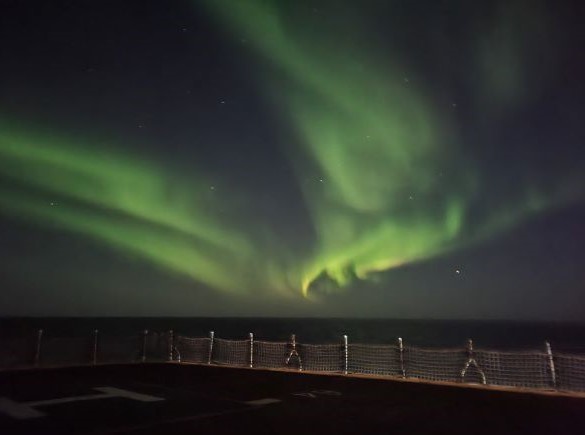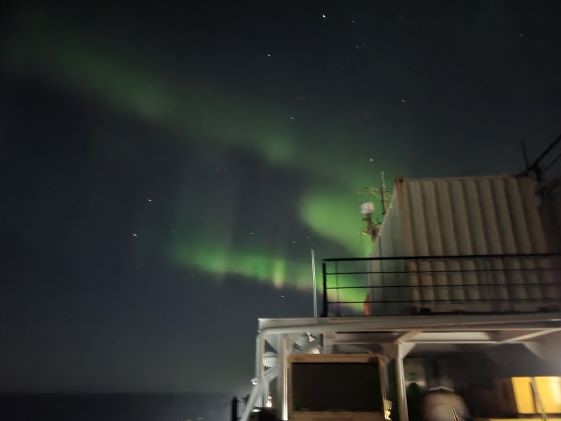Dispatch 22: A Night of Dancing Lights
Elizabeth Bailey
October 7, 2022
In the early hours this morning, the deck of the Louis was a popular place to be. Around 11:30 p.m. last night, the first of the Northern Lights began to illuminate the night sky, though they were dim and similar to what we had seen intermittently throughout the expedition. However, a couple of hours later the show truly began as the Aurora brightened significantly and danced across the entire night sky. By 1 a.m., a few of us began our rounds to wake up anyone who would be interested in watching the spectacle. Then, we gathered all over the deck, both on the bow and aft on the helideck, to watch the show.
The Northern Lights, also called the Aurora Borealis, are the northern hemisphere’s version of Aurora – a natural phenomenon that can only be viewed from a latitudinal band around either magnetic pole. Though these bands can vary, they typically begin 10° to 20° from the magnetic pole and span 3° to 6° in latitude. This means you can be too far north to see the Northern Lights; in fact, we were too far north to see them for about a week of the expedition! In the Southern hemisphere, this same phenomenon is called the Aurora Australis or the Southern Lights (where boreal refers to the northern hemisphere and austral refers to the southern hemisphere).
What causes the Auroras? When the outermost part of the Sun (also known as the corona) releases charged particles, primarily electrons and protons, this is called solar wind. Solar wind events cause a disturbance to the Earth’s magnetosphere, or the region of space around Earth where the magnetic field can affect charged particles. When the charged particles from a solar wind collide with gas in Earth’s upper atmosphere, ionization occurs, meaning the charge of each particle changes either from gaining or losing an electron. This collision and ionization emit light, creating the bands of light we know as the Auroras. The speed of the solar wind and acceleration of the charged particles through the atmosphere determine the colors and shape of the Aurora. Last night, we were able to see curtains of green, yellow, and occasionally pink lights! We’re looking forward to possibly seeing more of these fantastic Northern Lights before the end of the expedition!



